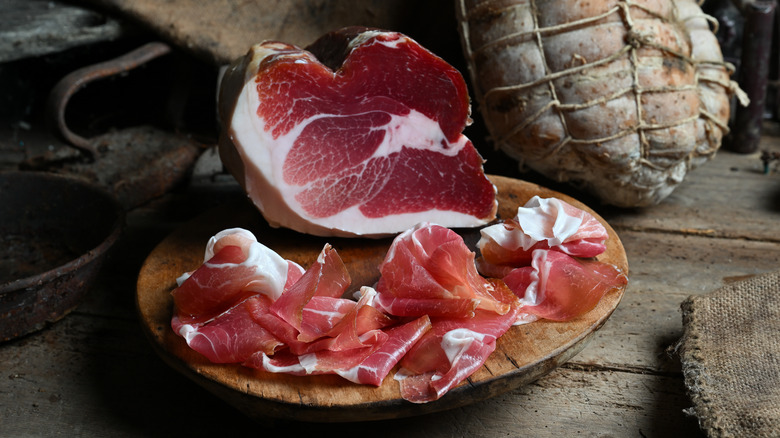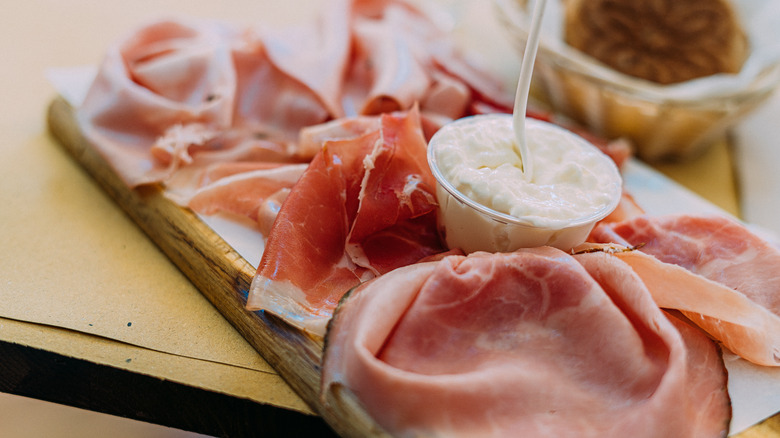Take Your Charcuterie Boards Up A Notch With This Unique Meat
A well-crafted charcuterie board entices with both bold flavors and a vibrant visual appeal. As opposed to an antipasto, this style of appetizer is all about emphasizing cured meats. So, to craft a rendition that'll impress guests, reach for a unique cut. But navigating all the charcuterie meat possibilities can feel tricky. To help, Chowhound received exclusive advice from Dominick DiBartolomeo, the owner of The Cheese Store of Beverly Hills – who certainly knows his way around charcuterie meats.
His advice is to reach for Culatello, which he notes as one of his favorite cuts. This Italian pork product is made in Emilia-Romagna, the same region as the more famed prosciutto, and also comes with a Protected Designation of Origin. However, low-production volume combined with a recent introduction to the U.S have kept it out of the eye of consumers.
Nevertheless, Culatello's delicious appeal is immediate. Crafted with a production process including a garlic seasoning and intestinal casing all aged in a humid cellar, it's a cut with multilayered complexity. The pork product features earthy, funky flavors all accompanied with a melt-in-the-mouth consistency. In DiBartolomeo's words, the meat has a "certain sweetness and gaminess that I crave," — quite a glowing review from a charcuterie expert. So seek out the cut to discover its magic.
Culatello offers a complex, earthy flavor that enhances charcuterie
If you're looking to further the cut's appeal, DiBartolomeo advises that "you should wrap the Culatello in a kitchen towel soaked in white wine or Fortana for a night." You'll amplify the cured pork's earthy flavors with intricate wine-imbued notes, which will elevate pairing potential. After all, the golden rule for filling in any charcuterie board is arranging components with their interactions of size, texture, and flavor in mind.
A natural pairing starting point is cheese; you'll find mouth-watering overlap when employing aged varieties. Consider something like a matured Parmigiano Reggiano to double down on the savory flavors. Meanwhile, for contrasting elements, DiBartolomeo recommends Mostarda, a type of sweet and spicy relish, as well as traditional mustards and pickled vegetables. He favors such ingredients because the acid will contrast the fats.
Finally, the wine pairing alongside a charcuterie can be considered an ingredient in itself. DiBartolomeo reaches for a Lambrusco for his antipasti. As a dry sparkling wine also hailing from the Emilia-Romagna region, this selection perfectly melds with the pork. So focus on delectable picks like these while avoid boring charcuterie ingredients, and your appetizer plate will shine.

